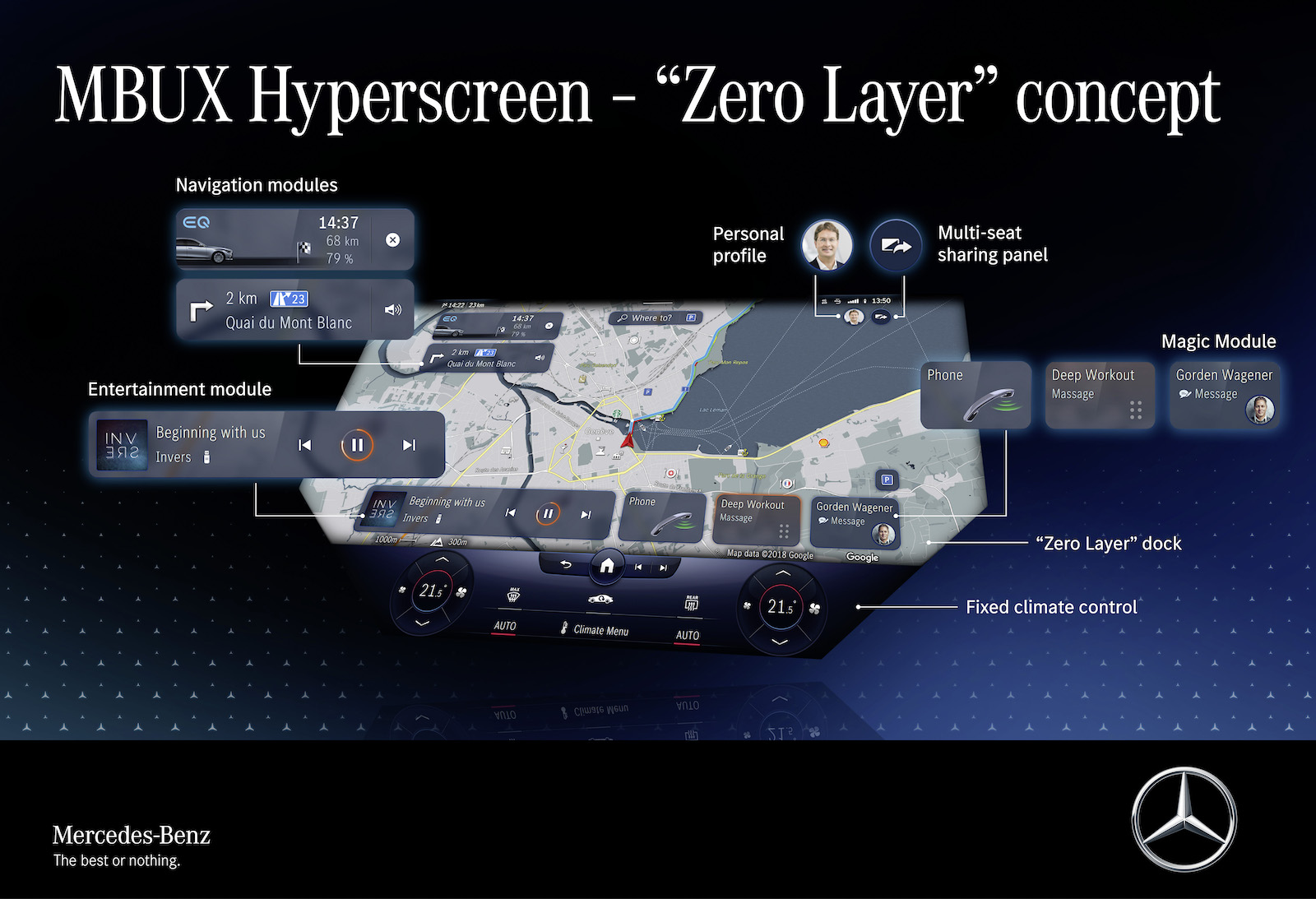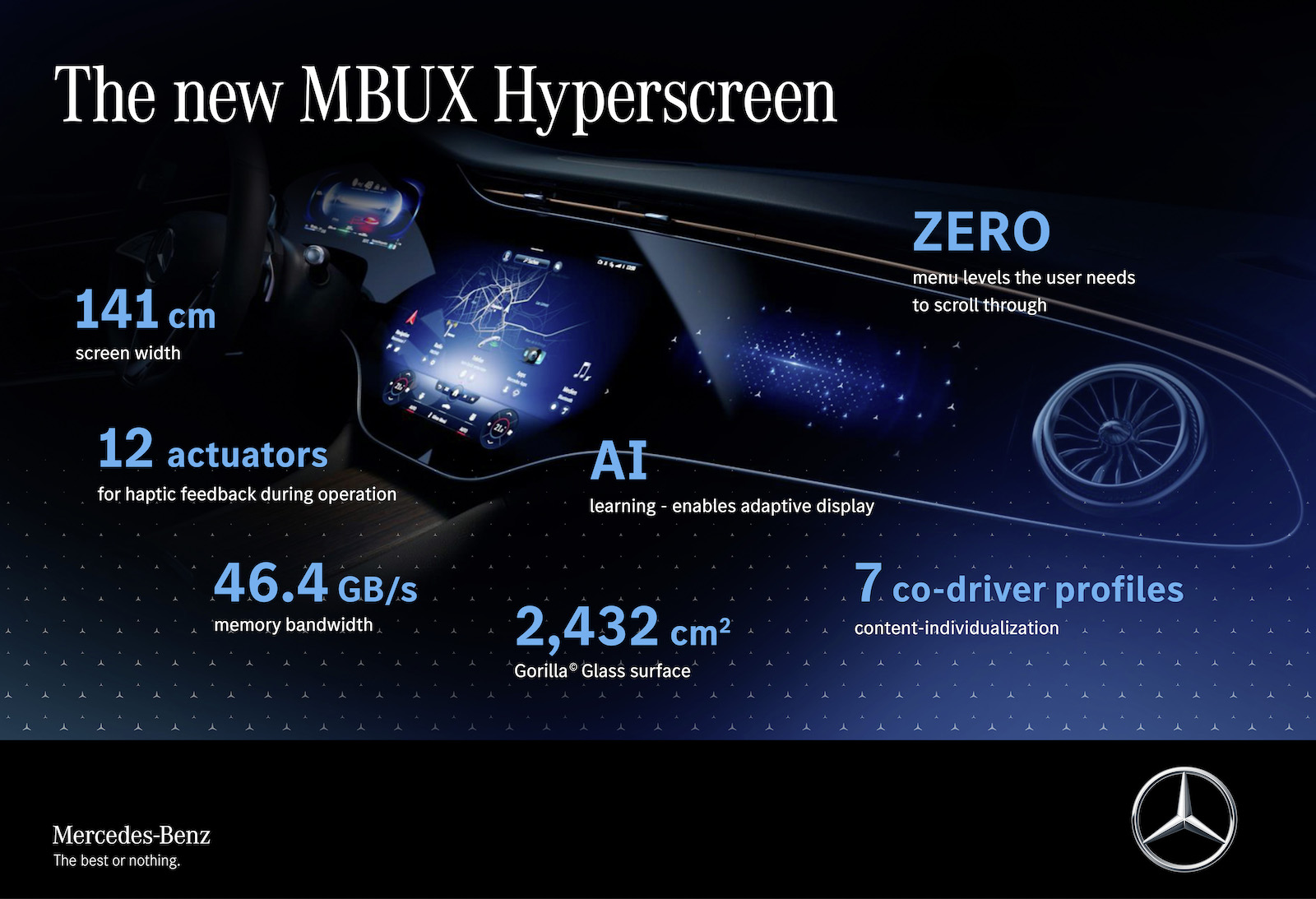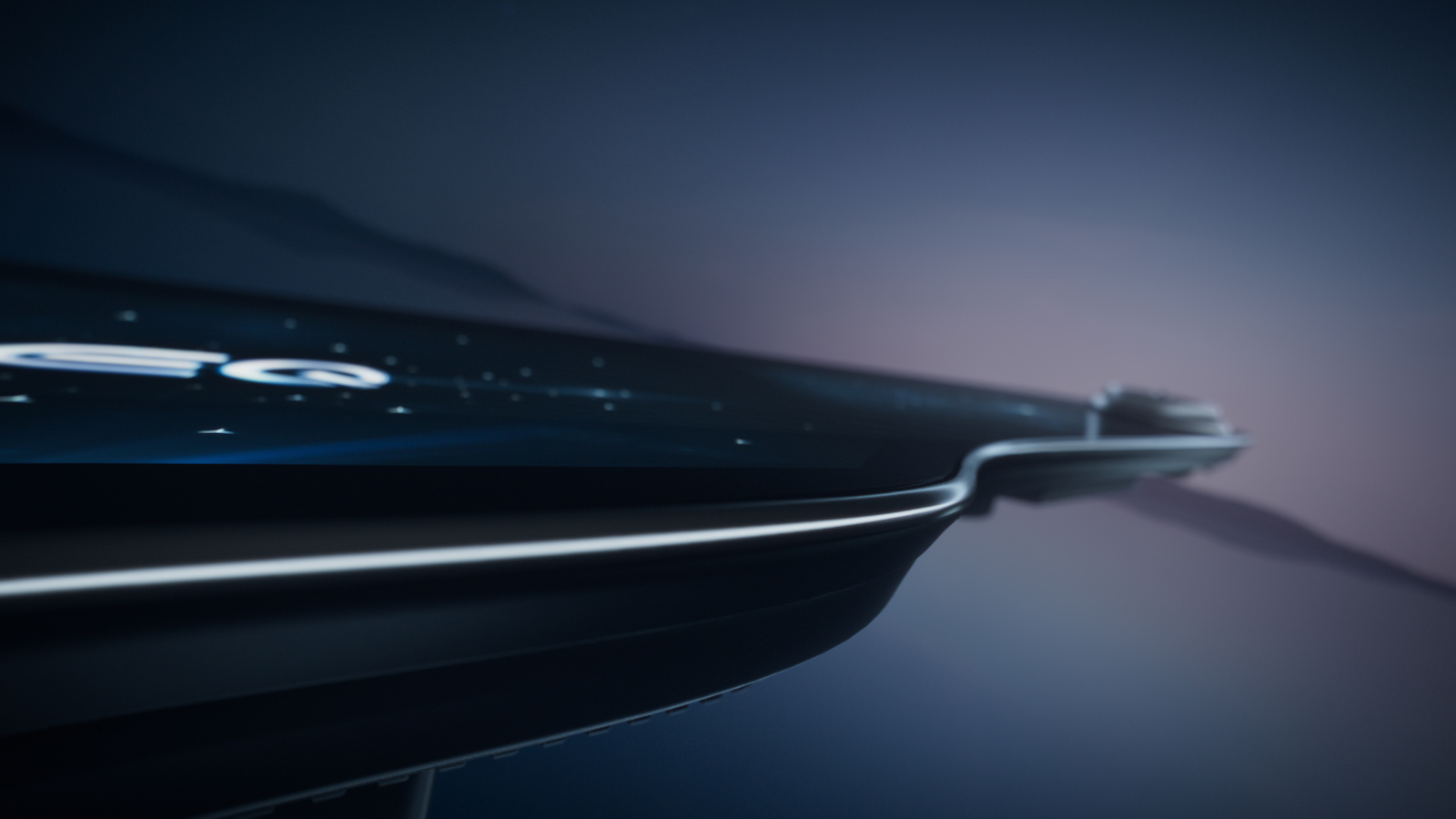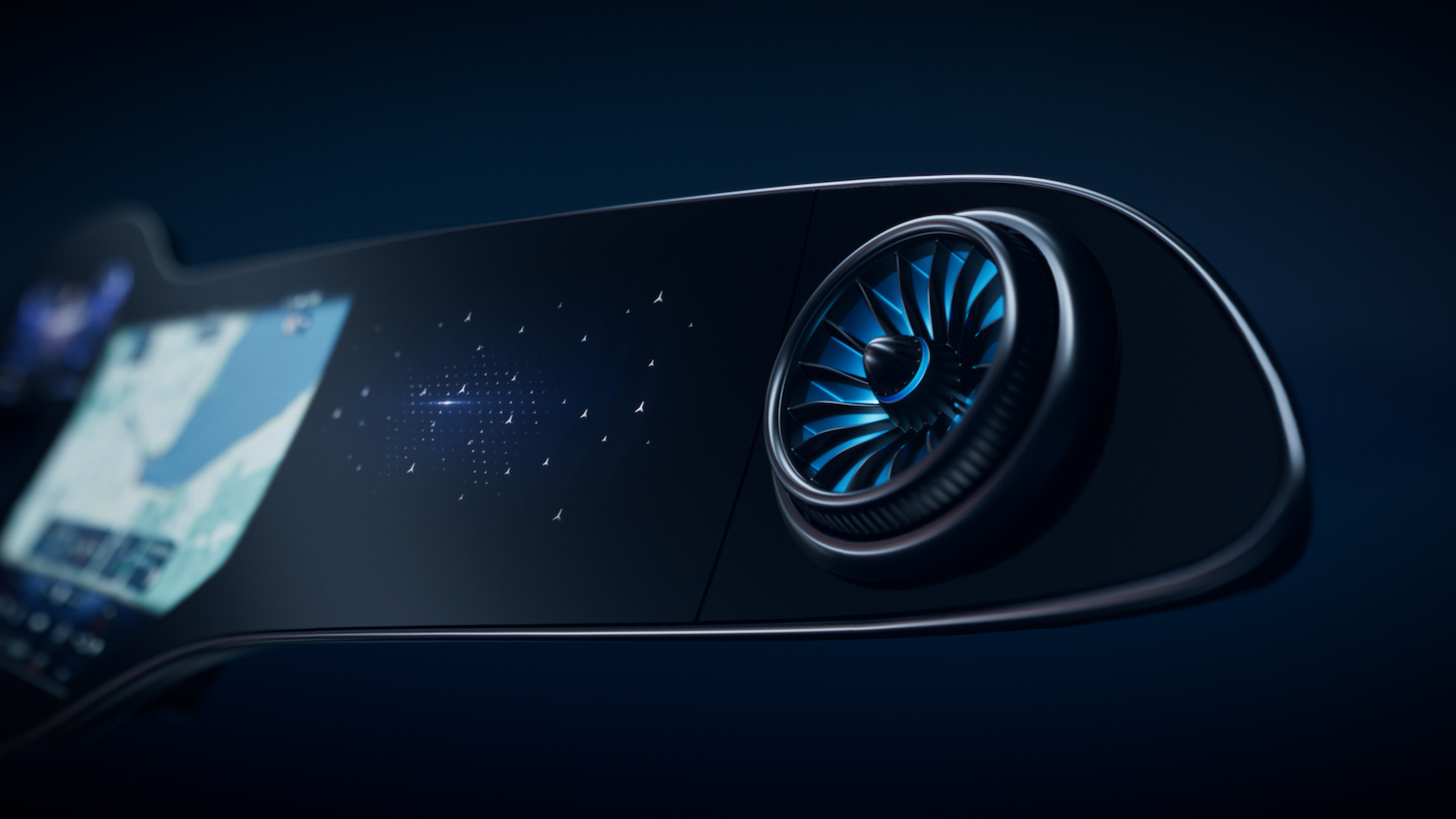The size of the in-car screens is getting out of hand. What started as tiny monochrome screens living in the instrument panel has become bigger than some computer screens. And it is about to get bigger. Tesla currently has the biggest screen in production, but that will soon change. The Mercedes-Benz EQS has fitted a screen so massive it sprawls the entire dashboard.
From A-pillar to A-pillar, the 141cm-wide Hyperscreen seamlessly integrates with the functional dashboard. Only the air-vents punctuates the large digital surface. Although it may not look like it, the Hyperscreen is several displays stitched together to give the illusion of one seamlessly curved infotainment screen.
Moreover, the MBUX interface employs artificial intelligence to provide a ‘zero-layer’ experience so that users don’t have to scroll through tedious layers of submenus or use voice commands. Like your YouTube recommendations, the most used functions such as radio, navigation, telephone, and other important notifications are prioritised, proactively displaying the right information at the right time. The electric drive’s essential functions such as boost or recuperation are visualised in a new way for a more entertaining and interactive experience.
Now if you’re green with envy with the front occupants getting the full ‘big-screen’ treatment, fret not because rear-passengers also have their display and operating area. The screens are linked to the seats but will display decorative elements instead when unoccupied. While the full use of the screens are only active when the EQS is in motion, the same ‘zero layer’ interface and the customisable content will still be available for the passengers.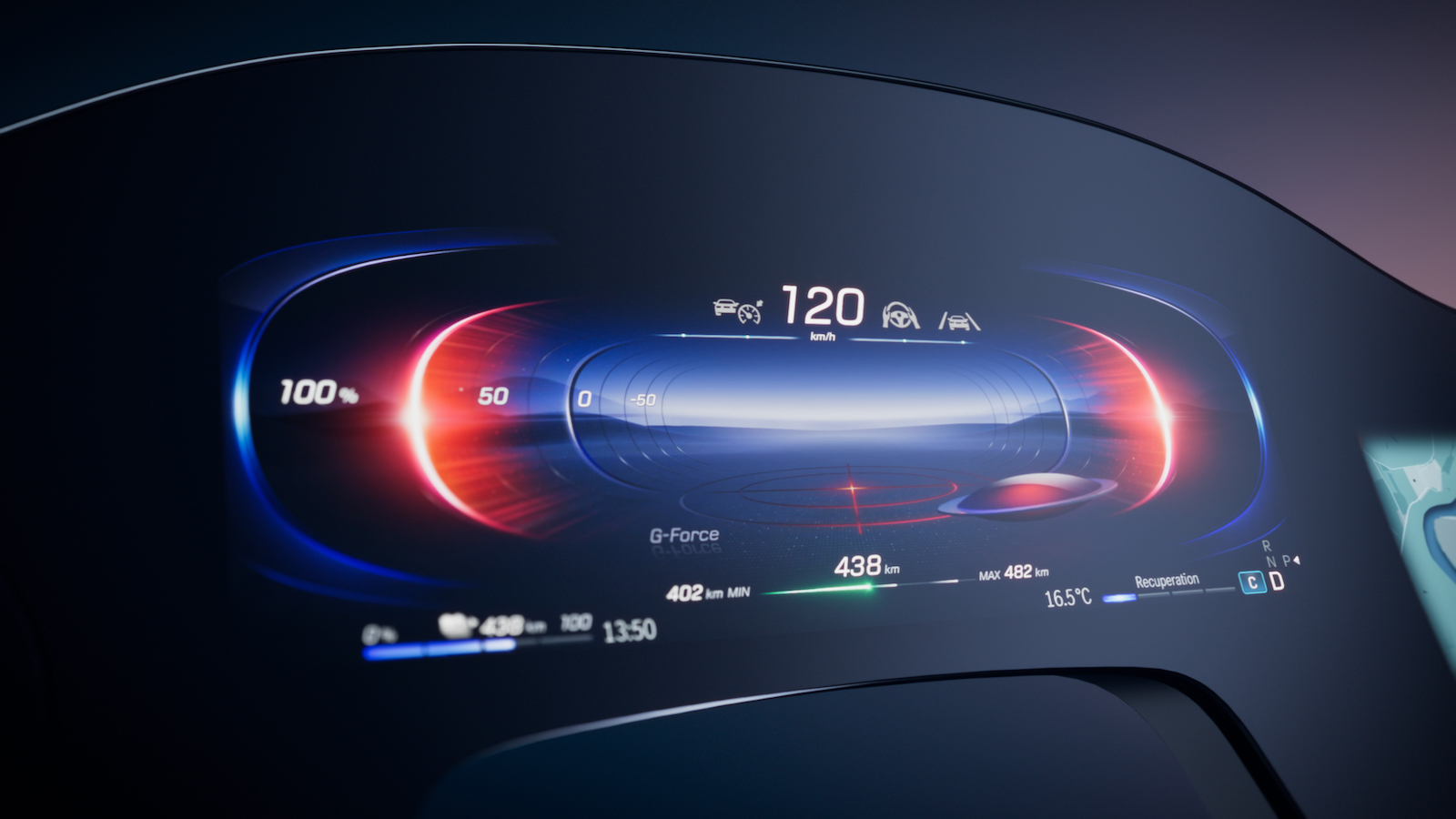
“With our MBUX Hyperscreen, a design vision becomes a reality,” says Gorden Wagener, Chief Design Officer Daimler Group. “We merge technology with design in a fascinating way that offers the customer unprecedented ease of use. We love simplicity, we have reached a new level of MBUX.”
An octa-core CPU powers the MBUX system with a 24-gigabyte RAM and a 46.4 Gbps memory bandwidth. The main Hyperscreen contains 12 actuators beneath the touchscreen for haptic feedback during operation, triggering a tangible vibration in the cover plate. Moreover, a multifunction camera and a light sensor measure the ambient conditions to adapt the screen’s brightness, so that it’s easier on the user’s eyes.
The displays utilise the latest in OLED technology for all screens, resulting in a crisp and high contrast image regardless of the angle of view and the lighting conditions. The large glass cover display is curved three-dimensionally, protected with two coatings of the cover plate. It reduces reflections and makes cleaning more manageable, and of course, being scratch resistant.
With this super-clear screen design, the MBUX Hypercreen is meant to be informative, intuitive and easy to operate. However, it begs the question, when is big too big with such a vast and multifunctional display?
Sure the EQS the Hyperscreen debuts on will undoubtedly have a certain level of autonomous driving capabilities, but the fact this display setup will be too distracting is also apparent. How much of the driver’s attention will be taken away from actually driving, and what are the repercussions of operating such a system? Well, we’ll just have to wait and see.